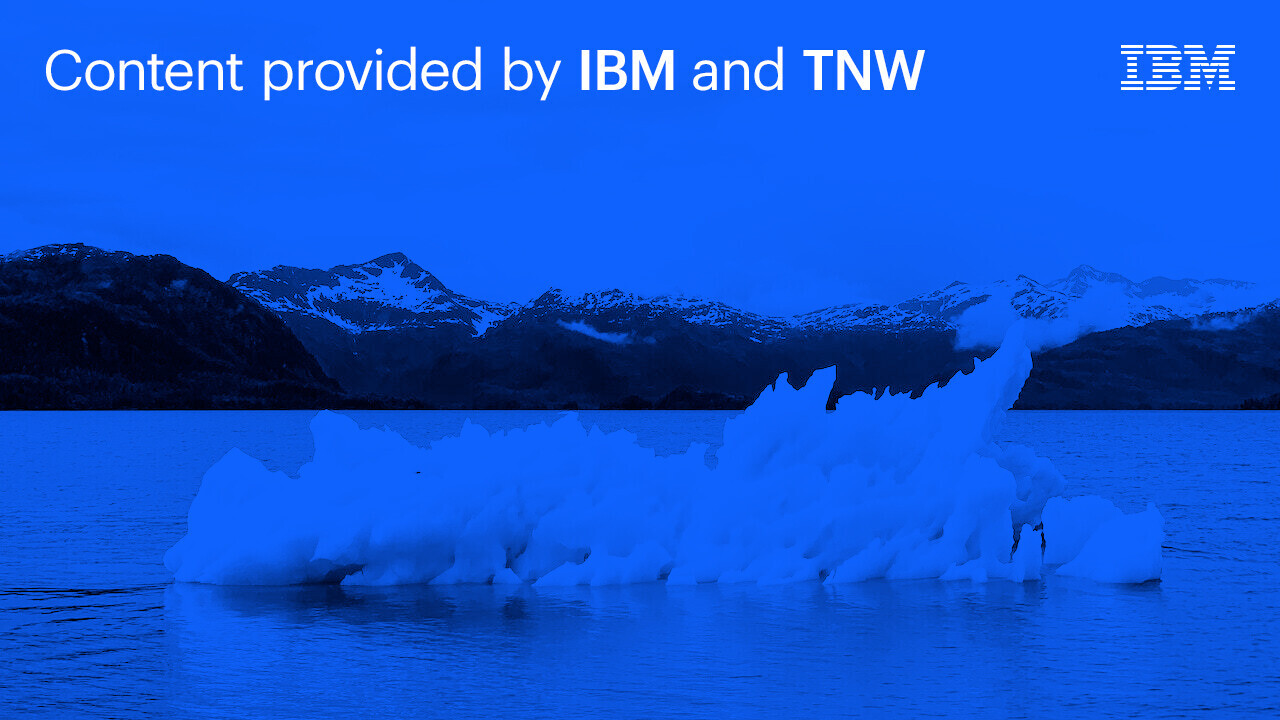
Content provided by IBM and TNW.
When Hurricane Harvey struck southeast Texas in 2017, it caused $125 billion in economic damages. A recent assessment of local businesses in the area found that 90% lost revenue in the five figure range due to employee disruptions, lower customer demand, utility outages, and/or supply chain issues. Those that suffered property damage experienced compounded losses with parts of the business being shuttered for weeks and months at a time until repairs could be made.
Since 2017 there’s been an average of 17.8 weather/climate disaster events per year in the US alone. In fact, just in 2022, there have been 9 weather/climate disaster events with losses exceeding $1 billion each.
Rising temperatures, floods, droughts, wildfires and other offshoots of climate change present major challenges to economies and communities around the world. As a result, businesses are feeling the pressure to adopt new strategies to reduce their carbon footprint in the long term. But many have yet to prepare themselves for the impact that climate change can and will have on their operations.
Many companies are already feeling the heat, experiencing climate-related damage to their assets, and disruptions to supply chains. According to a recent report from the World Economic Forum, global heat waves and other extreme weather conditions could also cause a spike in the cost of raw materials for production, which would inevitably present huge revenue losses across sectors.
With such a high risk the question is, why have so few businesses prepared for the potential effects of climate change?
The complicated world of climate data
While an overwhelming majority of businesses have plans in place for cyberattacks and Covid-19, the World Economic Forum’s Global Risks Report 2021 found that extreme weather, climate action failure, and human-led environmental damage are in fact the top three most likely risks for businesses over the next ten years. Yet, many still don’t have clear strategies and risk analyses in place to guide decision-making.
“One of the major challenges for general business operations is that companies are still getting familiar with the many variables involved in collecting climate data,” says Miguel Modestino, an Associate Professor and Director of the Sustainable Engineering Initiative at New York University’s Tandon School of Engineering.
Indeed, tracking climate data requires historical weather data, sensors, intensive manual labor, computing power, as well as internal climate and data science skills. Even if you can capture this data, the problem then lies in being able to combine and compare all of the different variables to create one big picture of what’s happening on the ground.
Geospatial analysis is key to unlocking the potential of climate data.
According to Hendrik Hamann, Chief Scientist for Future of Climate at IBM:
In order to understand the economic damage of a flood, for example, one has to combine flood risk information with road and elevation information, or many other sets of information in order to understand its overall impact on business.
Once you capture climate data, the next challenge lies in understanding how to extract valuable insights from this information and how to actually apply them to business operations.
An EY study found that only 41% of organizations conduct scenario analysis of climate-related risks. This means that, in the increasingly likely event that a weather-related disaster does occur, many organizations don’t have a clear picture of what the potential risks, costs, and action plan would be. Without this understanding, prevention measures, budgeting, and other essential decision-making becomes a guessing game for business leaders who need to present this information to investors and other stakeholders.
“We’re sitting on this mountain of information, yet we’re only looking at the tip of the iceberg. There’s all of this high value data out there including observations about our planet Earth, but we’re not taking advantage of that to make better decisions,” Hamann explains.
Curbing climate impact with new tech
Geospatial analysis is key to unlocking the potential of climate data – but these insights are based on massive amounts of complex and disparate data types, including satellite, GPS, and historical weather data and imagery. The use of AI and machine learning holds great potential for helping businesses access and analyze these datasets in a way that is more manageable.
“With AI, companies can also develop advanced models that use machine learning to really quickly calculate the environmental impact of a particular set of business operations,” Modestino explains. “Having efficient machine learning models can help optimize their operations to maximize profit while maintaining a particular climate target.”
IBM recently launched its Environmental Intelligence Suite (EIS) which brings together a wide variety of weather, climate, AI and operational technologies into a single software as a service offering that companies can use to better plan for and respond to climate risks.
Map out the potential risks across your business’ operations.
A unique capability within this suite is a geospatial analytics engine developed within IBM Research, which helps provide insights on complex geospatial datasets in a way that can be more easily accessed and combined with broader business technologies and data. This can help companies efficiently understand and analyze geospatial data to predict the risk and potential impact of upcoming climate and weather threats to their business.
“When we think about satellite observations of the earth, we think, ‘how can it be analyzed?’, or ‘how can we understand natural phenomena like tree growth, vegetation growth and how much carbon is being stored in it,” Hamann says. “This is all covered by geospatial analytics.”
For instance, where a utility company has tens of thousands of substations which are used to supply electricity to customers, climate impact might give rise to the following questions: Which of our asset locations are at the biggest risk? How can those sites be prepared to withstand the impact? How will investments be allocated? The ability to analyze geospatial data keeps companies informed about potential risks and prioritizes them while making actionable business decisions.
How to get started
It’s clear that developing clear strategies for extreme weather and climate change is no longer just for a rainy day. They will become key to enabling businesses to function, operate, and even grow.
The first step is to map out the potential risks across your business’ operations, from resource scarcity to the potential for logistics disruptions.
The next step is to consider the potential opportunities. How might changing your sourcing/production/distribution strategies lower your risk for climate change disruptions and boost your bottom line? How might these changes also contribute to your company’s longer-term sustainability strategies?
As it continues to affect populations all over the world, it’s also becoming increasingly clear that a warming planet poses a looming threat to business operations. Advanced technologies and methods, like geospatial analysis, are still in early stages and therefore we expect to see a lot more room for innovation in the coming years.
Get the TNW newsletter
Get the most important tech news in your inbox each week.






